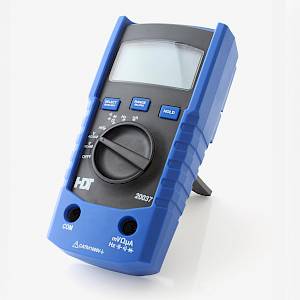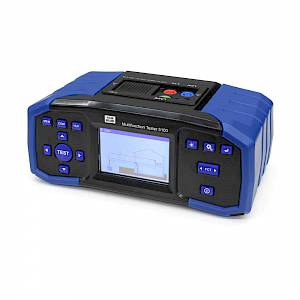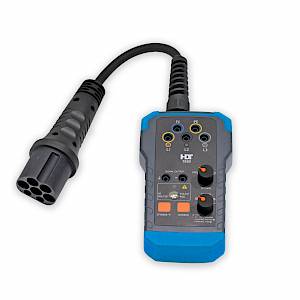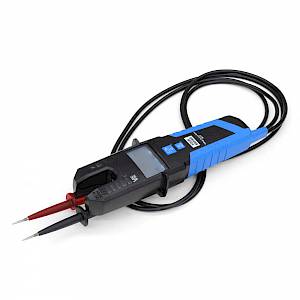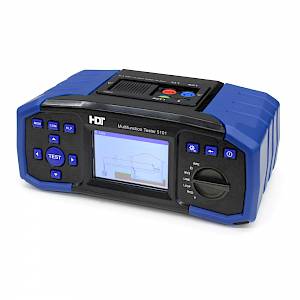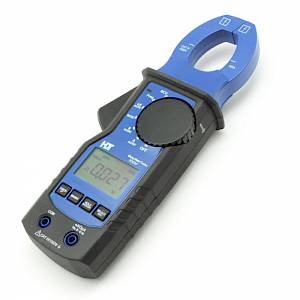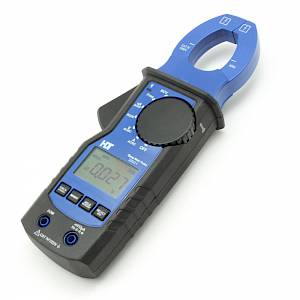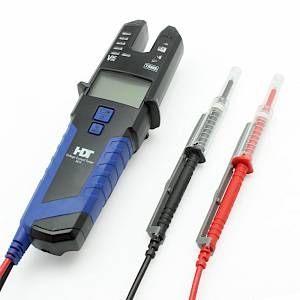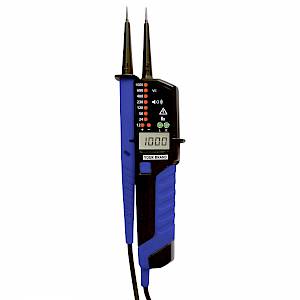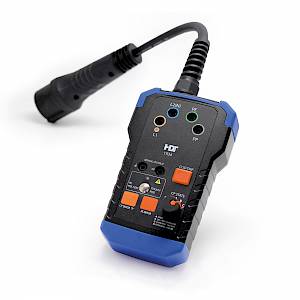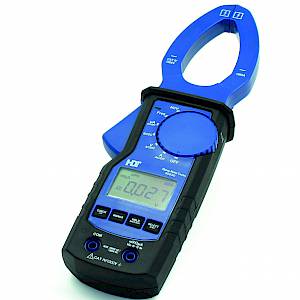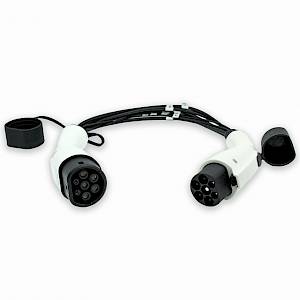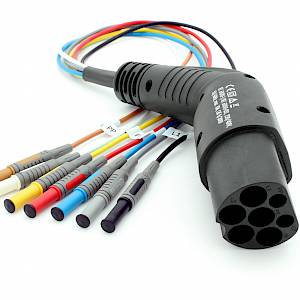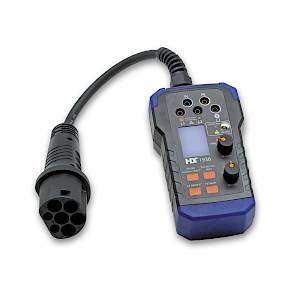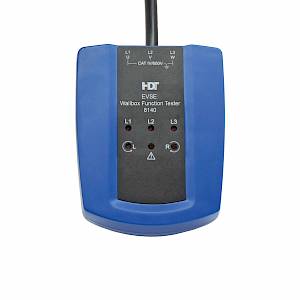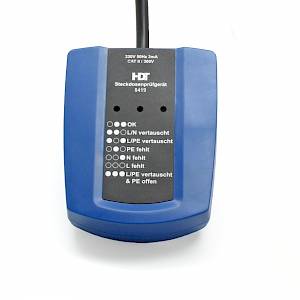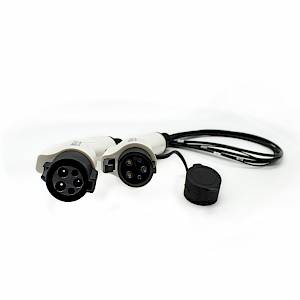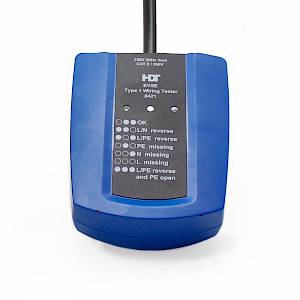CleanTech
Here you can find products which are specifically adapted or developed according to the new requirements from the energy generation and transmission and mobility. This are applications like the checking of e-car charging stations, the maintenance of e-cars, the energy generation by solar or wind or DC networks in industry and power transmission.
What is the CAT IV / 1000 V measurement category all about?
The measuring category specifies the permissible areas of application of measuring and testing devices for electrical equipment and installations (e.g. voltage testers, multimeters, VDE test devices) for use in the area of low-voltage power distribution. The classifica- tion of the measuring category is defined by IEC 61010-2-030 (Safety requirements for electrical equipment for measurement, control, and laboratory use - Part 2-030: Particular requirements for test and measurement circuits).
The measurement categories are similar or identical to the overvoltage categories in terms of values,[1] but are based on other standards and describe different circumstances.
The measurement category CAT II to IV is of particular importance for safety in measurements, since low-resistance circuits have higher short-circuit currents and overvoltage’s and transients due to load switching, lightning strikes or phase errors. They must be withstood by the measuring device without endangering the user through electric shock, burns, mechanical hazards, fire, sparking, arcing or explosion.[2] Due to the low impedance of the public power supply network, the short-circuit currents are highest at the house infeed. Within the house installation, the maximum short-circuit currents are reduced by the series of resistances of the installation.
Technically, compliance with the category is achieved, among other things, through contact safety of plugs and sockets, insulation and stable flame-retardant housing, sufficient air and creepage distances, adequate conductor cross-sections and, in particular, a fuse with a high breaking capacity (typically 10 kA at nominal voltage).
The measurement category is marked on the measuring instruments with Roman numerals. If the indication is missing, the device may only be used for measurements “without category” (before category 1 (CAT I).
The following categories and intended uses are defined in IEC 61010-2-030:[3]
| Without measurement category | Measurements on circuits that have no direct connection to the mains (battery operation), e.g. devices of protection class 3 (operation with safety extra-low voltage), batteryoperated devices, 12...24 V car electrics. | |
| CAT II | Measurements on circuits that have a direct connection to the low-voltage mains by means of a plug, e.g. household appliances, portable electrical appliances. | |
| CAT III | Measurements within the building installation (stationary consumers with non-pluggable connection, distribution connection, permanently installed devices in the distribution board), e.g. sub-distribution. | |
| CAT IV | Measurements at the source of the low-voltage installation (meter, main connection, primary overcurrent protection), e.g. meter, low-voltage overhead line, house connection box. | |
Source: https://de.wikipedia.org/wiki/Messkategorie, translated into English 15.12.2021
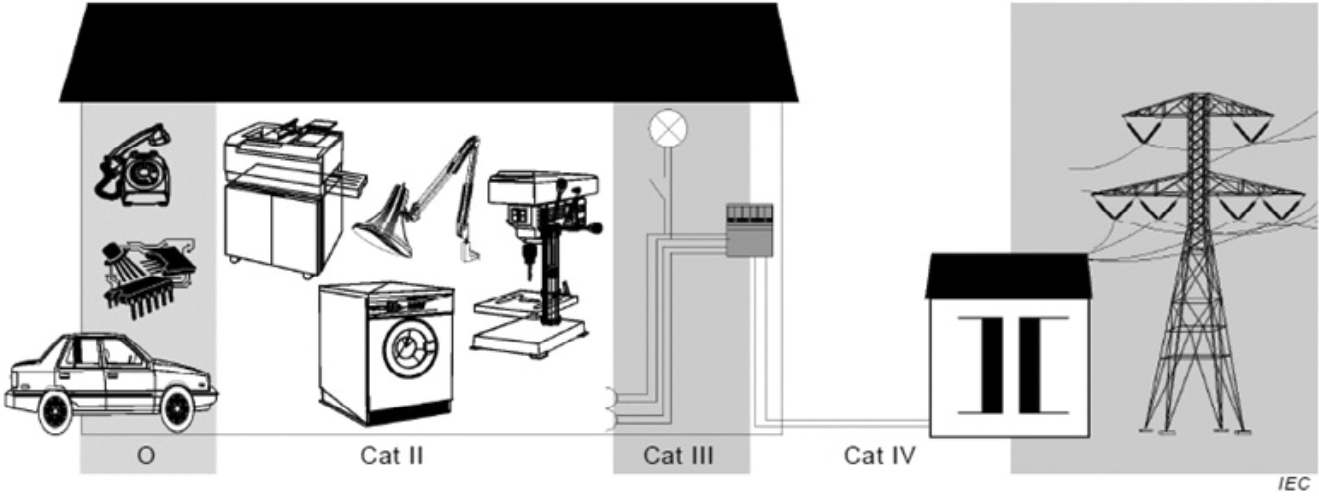
0 Measuring circuits without a MEASUREMENT CATEGORY
CAT II MEASUREMENT CATEGORY II
CAT III MEASUREMENT CATEGORY III
CAT IV MEASUREMENT CATEGORY IV
Source: Standard 61010-2-030 as examples for the CAT rating, e-cars are still missing here.
The overvoltage categories were adapted in 2020 with the last update of standard 61010-2-033. Since then, there have been categories above 1000 V. The ranges 1000 V - 1500 V, 1500 V - 2000 V and 2000 V - 3000 V were added.
Table K. 101 - Clearances of measuring circuits rated for measurement categories III and IV
| Nominal a.c. r.m.s. line-to-neutral or d.c. voltage of MAINS being measured V |
CLEARANCE mm | |||
| BASIC INSULATION AND SUPPLEMENTARY INSULATION | REINFORCED INSULATION | |||
| MEASUREMENT CATEGORY III | MEASUREMENT CATEGORY IV | MEASUREMENT CATEGORY III | MEASUREMENT CATEGORY IV | |
| ≤ 300 | 3,0 | 5,5 | 6 | 10,4 |
| > 300 ≤ 600 | 5,5 | 8 | 10,4 | 15 |
| > 600 ≤ 1.000 | 8 | 14 | 15 | 23,9 |
| > 1.000 ≤ 1.500 | 11 | 18 | 22 | 36 |
| > 1.500 ≤ 2.000 | 18 | 22 | 36 | 44 |
| > 2.000 ≤ 3.000 | 22 | 25 | 44 | 50 |
Table 102 - Impulse voltages
| Nominal a.c. r.m.s. line-to-neutral or d.c. voltage of MAINS being measured V |
IMPULSE VOLTAGE V peak | |
| MEASUREMENT CATEGORY III | MEASUREMENT CATEGORY IV | |
| ≤ 300 | 4.000 | 6.000 |
| > 300 ≤ 600 | 6.000 | 8.000 |
| > 600 ≤ 1.000 | 8.000 | 12.000 |
| > 1.000 ≤ 1.500 | 10.000 | 15.000 |
| > 1.500 ≤ 2.000 | 15.000 | 18.000 |
| > 2.000 ≤ 3.000 | 18.000 | 20.000 |
| Values over 1.000 V are from IEC TS 62993:2017, Table 1. | ||
Source: IEC 61010-2-033 standard (Particular requirements for hand-held multimeters and other hand-held measuring instruments for household and professional use, suitable for measuring mains voltages).
The HDT measuring instruments of the protection category CAT IV / 1000 V are designed to measure in a CAT IV environment up to 1000 V AC and DC..
For example, the HDT current clamps 30020 and 30021 measure DC voltage up to 1500V. Up to 1500V can be measured in a CAT III environment. The clearances, creepage distances and pulse strength requirements for CAT III/1500V are listed in the 2 stand- ards tables above. Both are lower than for CAT IV / 1000 V.
Solar panels are seen as a CAT III environment, the protection category for e-cars is not yet defined but will most probably be CAT III because of the short-circuit currents.
